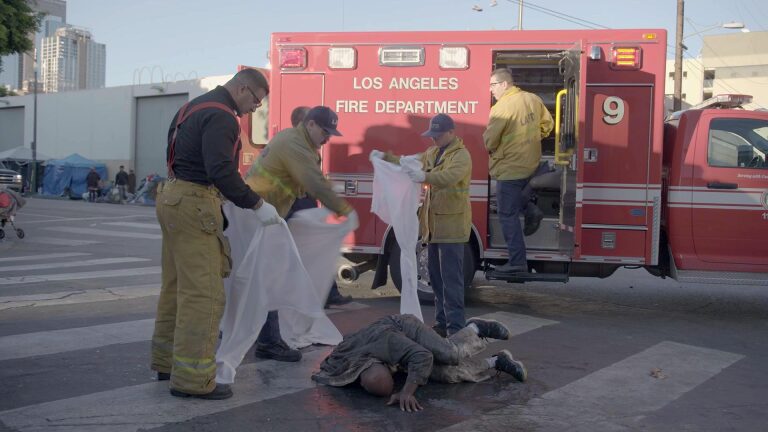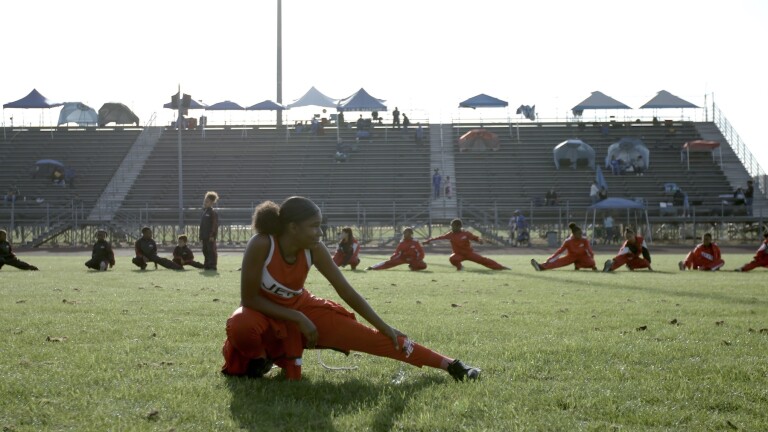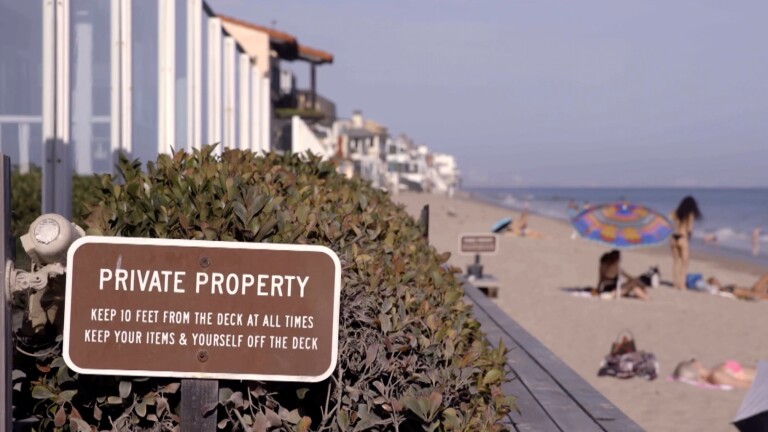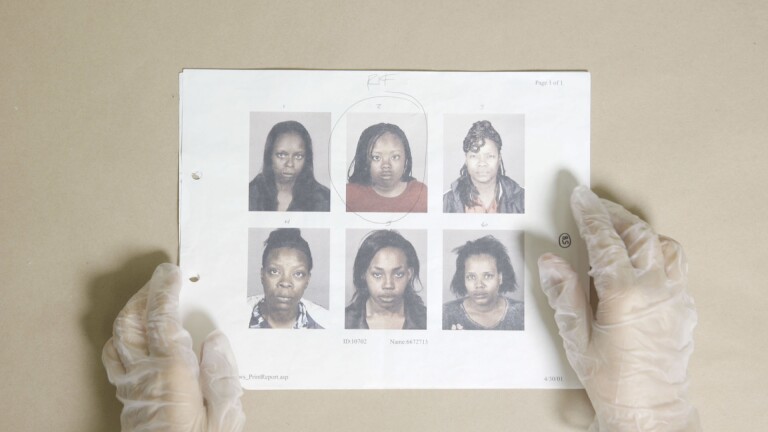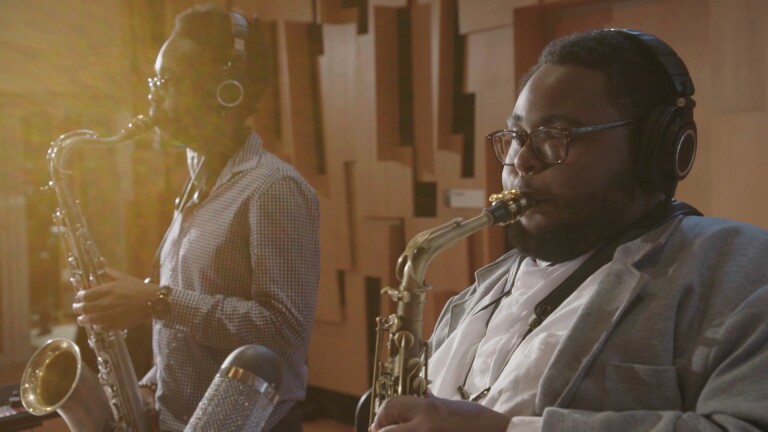All Moved In, Space Shuttle Endeavour Becomes Symbol of Hope for Future Spaceflight
We had the fabulous flyover and a spectacular slo-mo parade. And now Space Shuttle Endeavour - tires permanently on terra firma - is open for business. The brand new exhibit showcasing the retired orbiter is permanently stationed at the California Science Center in L.A.'s Exposition Park. And, just in case you think this marks an "ending" of some kind, our Jennifer London wants you to know, you ain't seen nothin' yet.
TRANSCRIPT:
[Shuttle flies over Hollywood sign. People cheer.]
London: From the air and from the ground…
Audience A: Amazing!
Audience B: Unforgettable!
Audience C: Beautiful!
London: …the Space Shuttle Endeavour received star treatment.
Audience D: Oh my gosh! It was really emotional. It's just breathtaking.
London: And a hero's welcome.
Audience E: I'm very excited. I'm very proud to be here, very proud to be an American.
London: In September, tens of thousands took a break in their day and gazed skyward at the shuttle-turned-starlet. This was Southern California’s -- L.A.'s -- moment to shine...
Watching Endeavour land and come to rest at the United Airlines hangar transcends a once-in-a-lifetime event, because this will never happen again during anyone's lifetime. So it's not an exaggeration to say that history was made here at LAX.
And in October, it was made again on the streets of L.A. as the shuttle maneuvered past trees, under power lines and over the freeway. All under the watchful eye of an entire city and Jeff Rudolph, president of the California Science Center, Endeavour’s new permanent home.
Rudolph: We saw the beginning of the public reaction when we flew into L.A. and had some incredible response flying over the capitol in Sacramento, over the Golden Gate in San Francisco Bay Area and all around L.A. And we saw millions of people statewide looking skyward, excited, smiling, happy, proud and patriotic, and most importantly inspired.
London: Rudolph and his team at the science center have spent a year and a half preparing for this date. And it's certainly a remarkable event that all of L.A. can take pride in. But for this man, Garrett Riesman, it's more than just remarkable. It's personal.
Reisman: I was a NASA astronaut for 13 years. I flew to space on Endeavour on my first mission in 2008.
London: So you flew Endeavour in 2008, and you went to space, what is now perched right on your shoulder on the street of L.A., what does that feel like?
Reisman: It is surreal, because I’m used to being around Endeavour. I've climbed in her. I've seen her in her hangar. I've seen her on the launch pad. But it is weird, very, very weird to see this vehicle that I picture in those environments sitting here on the surface streets of Los Angeles. She's not going to fly again but she's going to make other people fly and that's really, really special.
London: Many see Endeavour not just as an impressive representation of Southern California’s past muscle and might in the aerospace industry, but also a vital part of its future. With the end of NASA's shuttle program, the private space industry is playing a critical role in shaping the future of space exploration.
And this is what the future of space exploration looks like. Mission Control at Space X, headquartered in Hawthorne. This means less NASA, and more private companies led by entrepreneurs, like Elon Musk, who founded Space X in 2002. Recently NASA awarded the company a $440 million contract. And in early October, the next generation of space vehicles, destined for the international space station, was successfully launched. Currently, the dragon rockets can only carry cargo to the ISS, but the master plan is to build a capsule capable of carrying people, filling a void, created by the end of the shuttle program.
Reisman: Since Atlantis flew its last mission over a year ago, the United States lost its ability to send people into space. I’m not happy about that. It's not a good place for this nation to be and we are reliant. We're completely reliant on the Russians and that's bad for a number of reasons. The Russians are not taking our guys up in the Soyuz for free. In fact, they are charging $63 million per seat to take our guys up and down to the space station.
London: Reisman has since retired his space suit for a corporate suit and is now a program manager and senior engineer at Space X.
Reisman: The hard part was voluntarily leaving the astronaut office, because that's a great gig. But what really led me here was that I was really excited about what I was seeing in the private sector. I was seeing a lot of innovation. I was seeing a lot of rapid, rapid progression, and a real promise for a very bright human space flight future.
London: And that, according to Reisman, is the driving force behind the revival of Southern California’s aerospace industry. Back in the day, Southern California was to aerospace what Silicon Valley is to high tech, and Reisman believes history is being repeated.
Reisman: This rebirth, the phoenix-like rise of companies like Space X, and being located here in Southern California brings with it a lot of benefits, and we're able to benefit from that giant wealth of experience and talent pool that exists.
London: And has existed for the better part of a century. The engines for the Saturn rockets were built in Canoga Park. The voyager spacecraft were built by JPL. And the space shuttles were built and tested in Palmdale.
Kimberly Ritter-Martinez: Southern California's aerospace industry started up not long after the Wright brothers’ first flight at Kitty Hawk.
London: Kimberly Ritter-Martinez is an economist with the L.A. Economic Development Corporation. She recently co-authored a study examining the aerospace industry in Southern California.
Ritter-Martinez: One of the very first international air shows was held right here in Los Angeles in 1908.
London: Launching the industry as we know it today, including JPL, Cal Tech, Research Labs, Test Field, all attracting a highly skilled workforce. But the end of the Cold War also meant the end of the region's aerospace heyday.
Ritter-Martinez: We all remember the big defense cuts and base closures that took place in the 1990s, but that doesn't tell the whole story. We still have aerospace products and parts manufacturing and related instruments manufacturing within the six-county-area of Southern California. Well over 120,000 people employed.
London: It's because of that existing infrastructure and the end of the shuttle program that the next chapter of Southern California’s aerospace industry is currently being written.
Ritter-Martinez: I hate to use a cliche we're at a crossroads, but I think that's basically where we're at right now. As far as future growth goes, what’s really exciting is the partnerships that are developing between the private sector and NASA. So I think we're seeing the start of a trend that's only going to continue to grow and get larger as time passes.
Reisman: It's happening right here, and not only here but also up in Mojave. That's where you know scaled composites are working on the tourist missions for Virgin Galactic, where they can do suborbital flights. But there's also other exciting companies that are up there experimenting with new rocket engines. That's all leading us forward into this next phase where the private sector kind of leads the way and works in partnership with the government to really rapidly increase the pace of technological change and progress.
London: And this brings us back to Endeavour and her role in helping revive and reshape the future. Ken Phillips is the curator for aerospace at the California Science Center. He wrote the winning proposal to bring Endeavour home.
Phillips: We think Endeavour’s tie-in, bringing it to the city and what it represents, the technology that's embodied in it -- it's a lesson of what I think people can do when they decide to work together and behave well. They can do some pretty amazing things.
Reisman: Endeavour’s mission is going to continue in the sense that it's going to represent the opportunity to provide inspiration. So this is the end of a chapter. It's not the end of the book. And really what we want to do here at Space X is build a vehicle that could go to Mars, because my boss Elon Musk, he wants to retire on Mars. He says that's not a flippant statement. He is serious about that.
London: The promise of what once seemed like the stuff of science fiction being launched right here on the shores of Southern California.
For "SoCal Connected," I’m Jennifer London.

